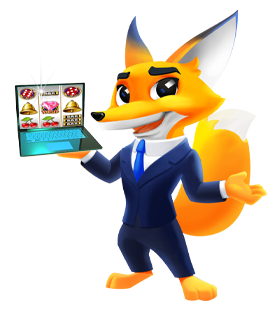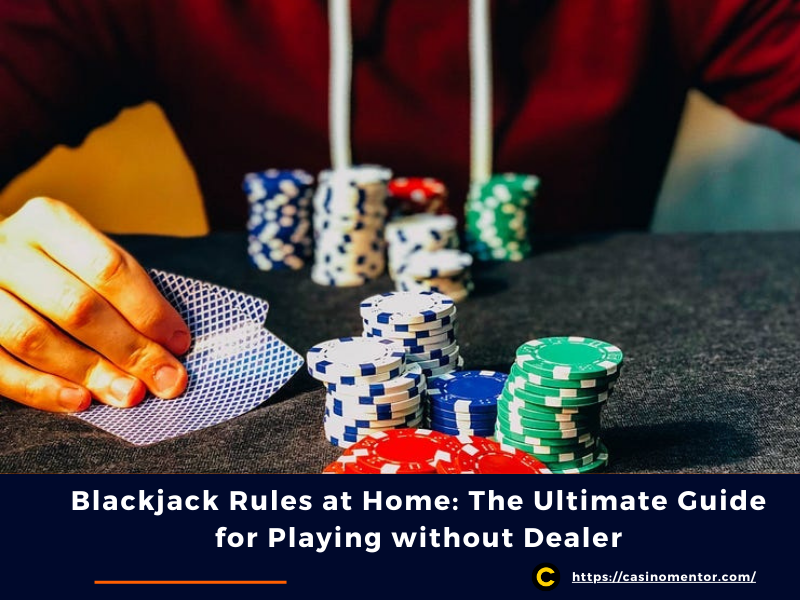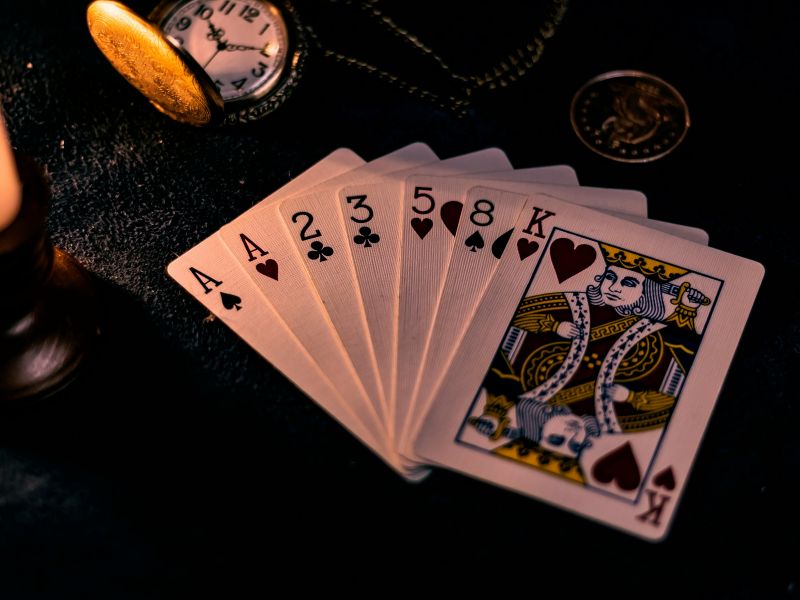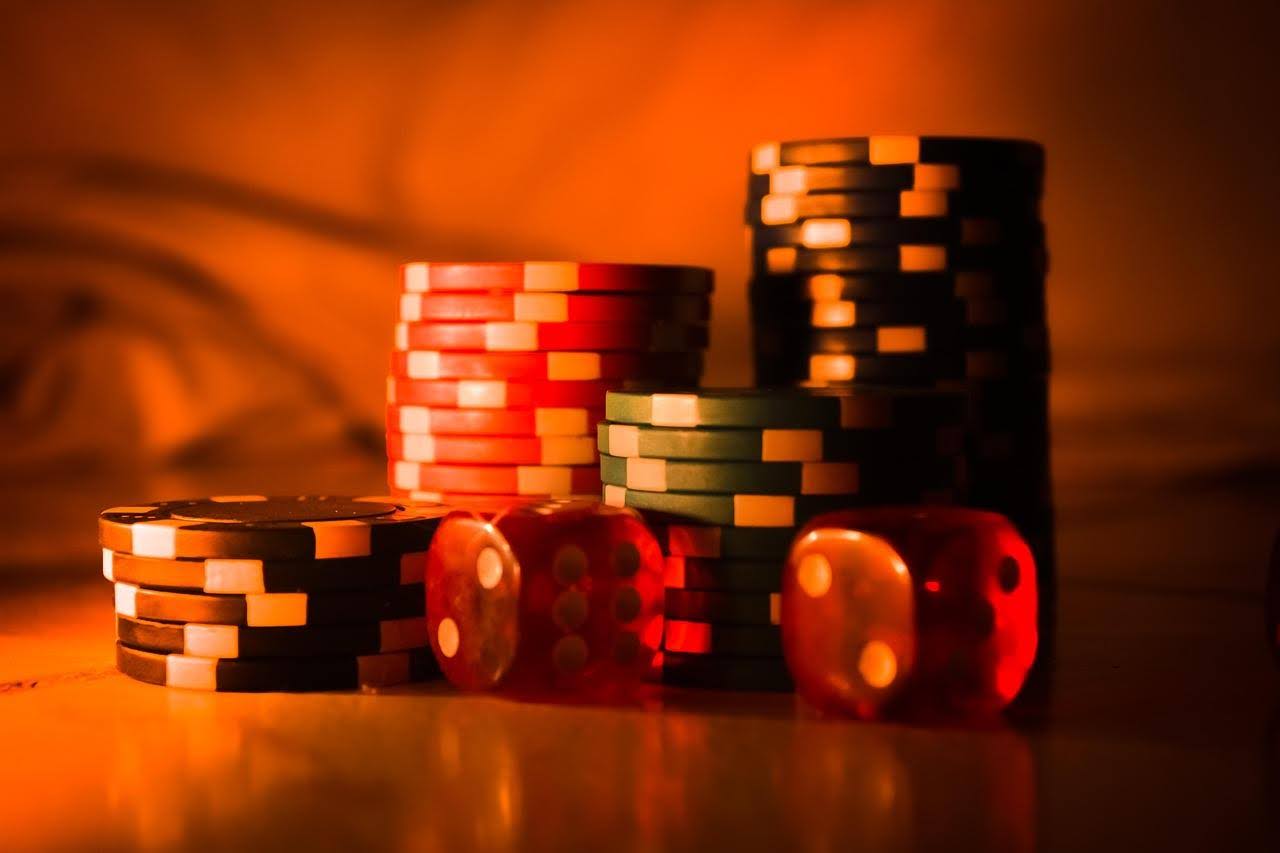How to Win at Blackjack Every Time? The Expert's Instruction
Blackjack is one of the most popular and well-liked casino games in the United States and throughout the world. Blackjack is a skill and chance game, and most gamblers find it an exciting challenge.
We'll look at why blackjack is so popular among casino goers and why you might want to play it. In addition, this article also includes basic blackjack strategies explained in detail for beginners. You can refer to it to know what to do in specific situations in the game, thereby increasing your chances of winning.
Why is Blackjack Loved by Many Gamblers?

Blackjack is appealing to players with varying bankrolls and skill levels. Some of the reasons for the game's appeal among new players are as follows:
The Rules Are Simple To Follow
The most obvious explanation for blackjack's enormous appeal is that the game's rules are quite simple and easy to grasp. The basic goal is to acquire a 21, which results in a natural blackjack, or to beat the dealer by getting as near to 21 as possible without going over.
The dealer first deals two cards to each player. If a player chooses to take a card, they hit; if they are satisfied with their hand, they stand. These are the most fundamental principles, and they are simple enough for even inexperienced players to understand.
Blackjack Rules Are Applied Globally
Blackjack rules are not only straightforward but also global. That is, the game is played in casinos all over the world in much the same way. This makes blackjack even easier to grasp than most other casino games which have dynamic rules.
Potential Earnings
Blackjack's payoff is highly thrilling, which is reason enough for novice players to be drawn to this casino game. A natural blackjack pays out 2:1 or 3:2 of the bet, and the hand is over instantaneously (provided the dealer does not have an ace or a ten). When a player does strike a blackjack, the odds are just right to keep things intriguing. Even if they don't obtain a blackjack, they can continue to play until they do.
What are the Simple Strategies for Blackjack Players?
When it comes to making the greatest selections in blackjack, intuition is not your best friend. You may believe that what you are doing is correct, but it is a losing game in the long term.
The basic blackjack strategy lets you make the best selections at all times. This technique is unbiased and only based on numbers. When used correctly, it maximizes RTP while minimizing the house edge.
The fundamental technique is straightforward and successful. It explains what to do in every potential case. It is frequently displayed in the form of a table. You don't have to remember anything after you've learned how to use it.
Can I/Should I Surrender?
The ability to quit is a terrific option that is employed in the fundamental approach. When the dealer holds a high card (9, 10, or A) and the player has a total of 15 or 16, the player should resign. When a dealer hits on Soft 17, players are advised to surrender. Look at the table supplied previously; R stands for surrender.
Read more about when to surrender in blackjack.
Can I or Should I Split?
Splitting instructions are typically supplied in a separate table. There are several dividing rules, and it is easier to utilize the table rather than memorize them. Again, the rules will be slightly different depending on whether the dealer Stands or Hits on Soft 17.
Because you may be playing multiple blackjack variants, you should be aware that whenever you see Rh, it implies Surrender and, if not permitted, Hit. Surrender or Stand and Surrender or Split are represented by Rs and Rp, respectively.
Should I/Can I Double?
There are also different doubling rules, and more advanced basic strategy tables will cover all of these scenarios. In the table on this page, Dh and Ds stand for Double or Hit and Double or Stand, respectively. That is if double is not conceivable, you hit/stand.
Should I Hit or Should I Stand?
Hitting and standing are both simple. H is for Hit, while S is for Stand. Use the chart to determine when a certain decision should be taken. When you have a low-value hand versus a high-value dealer's card, you should usually hit.
Understanding Basic Chart
Blackjack has long been thought to be a purely mathematical card game. This concept has given rise to a number of methods that players might employ to increase their odds of winning. And these tactics are displayed on a chart called the blackjack strategy chart, which is a beginner's guide to playing blackjack. The chart assists players in lowering the house edge, therefore knowing how to read a blackjack chart is essential.

Blackjack charts, also known as blackjack decision matrices, are tables with several rows and columns. The chart shows the greatest selections and movements a player can make in a particular circumstance after being dealt the first two cards and seeing the dealer's up-card.
The chart describes the five possible options, or acts, available to players at any one time, which are hit, double down, split, surrender, and stand.
There are two larger rows in the standard blackjack strategy chart, denoting the player's hand on the left and the dealer's upcard on the right. When reading a blackjack chart, the rows represent the player's hand and the columns represent the dealer's up cards (these can be inverted in some matrices).
Rows
A simple blackjack strategy chart has one heading row, with the left side representing the player's hand and the right side representing the dealer's up card. Below it, there are around 26 sub rows with the future players' digits (in the case of the player's hand) and actions (in relation to the dealer's up-card number) printed on them.
Columns
Under the player's hand area, there is a single column that displays all of the numbers and possible combinations. There are ten columns on the right side, under the dealer's up card area. The top one includes numerals 2 to 10 and an ace, while the ones below have the acts highlighted in their corresponding colors.
Actions
The letters in the chart stand for possible actions in a blackjack strategy. They are:
- H - Hit
- S - Stand
- Dh - Double if possible, otherwise, hit
- Ds - Double if possible, otherwise stand
- P - Split the pair
- Ph - Split if allowed to split after double, otherwise hit
Aside from this, a few other acts are indicated in certain charts. These only apply in variations where the dealer is permitted to attack on soft 17. These optional actions are as follows:
- Rs - surrender if possible, otherwise hit
- Rp - surrender if possible, otherwise split
In addition, some professional chat blackjack strategies also use color-coding to make it easier for players to remember actions. As follows:
- Hit is green
- Stand is red
- Double Down is blue
- Pair Split is yellow
- The surrender is orange
Blackjack strategy charts appear hard because they contain a lot of information in a purely mathematical format. While the charts outline the main strategy, in a brief, it is challenging for any player to interpret all of the information while still implementing the plan into the existing game.
Pro gamblers need years of effort to perfect reading blackjack matrices and make them work in their favor in a casino or in online blackjack. Therefore, if you want to become a professional blackjack player, or at least improve your odds of winning blackjack in your next play, it is essential to consult and master the strategy board.
What to Do When You Hit 10 in Hand?
When the players' hand totals 10, they should decide whether to hit or double down based on the dealer's upcard. Standing is plainly contradictory in this situation since you only have a chance of winning if the dealer goes beyond 21. There are four methods to get a hard total of ten on the first deal: 8-2, 7-3, 5-5, and 6-4.
The following strategic plays are unaffected by the composition of the hard 10 cards. When it comes to the optimal strategy plays for hard 10, deck number, playing circumstances, and the dealer's fixed standing position are all meaningless.
If the dealer's upcard is any card from 2 to 9, players should double. But what is the reasoning behind this move? The goal here is to maximize earnings when you have a respectable total of 10 versus a dealer who starts with inferior upcards deuce through nine.
A hard 10 versus the dealer's 2 through 9 will always put you ahead. Furthermore, doubling down on your 10 delivers a bigger positive expected value against all of these upcards in the long term than hitting.
Inexperienced players frequently cringe at the prospect of raising their bets against the dealer's 8 or 9. Instead, they opt to go slowly and hit, which reduces their long-term anticipation.
According to gambling expert and mathematician Michael Shackleford, hitting or doubling down when the dealer has all 17 results in long-term benefits for the gambler. The fundamental concept behind doubling down is to capitalize on such advantageous moments and increase your earnings.
Meanwhile, the dealer starts strong when presenting anything higher than 9, necessitating a more conservative approach. Doubling is no longer ideal in this instance since 10 results in a negative expectation for the player versus the dealer's high cards. If the dealer's card is a 10 or an ace, the players should hit.
Doubling is not ideal in this situation since you only get one extra card and risk being left with terribly stiff hands 12 through 16, which are long-term losers. Keep in mind that the average winning total in blackjack is 18.5 points.
At the same time, starting with a 10 puts the dealer in a good position. In multiple-deck and double-deck blackjack, their chances of drawing a total of 20 are relatively high, at roughly 36%. As a result, hitting provides the player additional options and allows them to potentially better their situation by drawing more cards on weak hard totals 12 through 16. (as basic strategy recommends against a dealer with a 10 or ace).
Doubling Down with Hand 10
To understand the motivation behind these maneuvers, consider what the probable consequences of this circumstance are if the players opt to double down. Gamblers are extremely likely to go bankrupt if they receive any card from 2 to 6.
If players receive a 7, they will have a total of 17 in their hand, which is likewise a disadvantageous situation. If the dealer has a total value of 18 or above, the player will lose this one. And while an 8 may not appear to be a horrible hand, keep in mind that the average winning score is 18.5, making an 18 inadequate.
.jpg)
The basic line is that players have a chance to receive seven decent cards out of the thirteen possible hands and an equal number of alternative hands with which they are very certain to go broke. This reduces their chances of getting a favorable card to fewer than 50%, which is just too hazardous and should be avoided.
What gamblers should aim for is a card of 9 or higher, which will result in a total of 19 or higher, which is a fantastic hand. This is all gamblers need to remember when they hold hand 10 if they think these moves are fair.
Besides, another factor to note is that the player might occasionally have a total of 10 with three or more cards, such as 2-3-5 or 6-2-2. Unfortunately, doubling is only allowed on two-card beginning hands and is no longer an option with a multiple-card 10.
When this occurs, you execute the second-best move, which is to hit. The same is true for blackjack variants that enable you to double only on specific totals such as 9, 10, and 11. In the basic strategy charts, this is denoted as Dh (double, otherwise hit).
What to Do When You Hit 11 in Hand?
If a player's hand totals 11, the first thing they must do is consider the dealer's up card and act in accordance with it. It is worth noting that elements like the dealer's rules (H17 or S17) and the number of decks have an influence on the correct plays of your 11 versus specific dealer upcards.
When the Players’ Hand is 11 in Single-Deck Blackjack
Players should double down on their total of 11 regardless of what the dealer presents in blackjack versions that use just one deck of cards. This is a really strong starting hand total. Logically, you want to take advantage of this reality.
When holding 11 against the dealer's ace, several newcomers are hesitant to boost their stakes. In single-deck blackjack versus an ace, the win frequency while doubling down significantly falls, especially when the dealer must hit soft 17.
Nonetheless, with a total of 11, doubling down is the greatest move since it results in twice as high rewards, which boosts the player's anticipation. And here's something that many inexperienced players overlook. What counts most in blackjack (and gambling in general) is the expected value generated in terms of earnings.
Hand 11 in Double-Deck and Multiple-Deck Blackjack
In multiple-deck blackjack, the strategy to 11 versus strong face-up cards and aces alters somewhat because of the drawing and standing restrictions provided by the house for the dealer. The ideal strategy for your 11 is to double down against upcards deuce through ten, even against a dealer who must stand on soft 17, and to hit when the dealer has an ace.
In double-deck blackjack, the odds favor hitting rather than double on an 11 versus an ace. When facing a dealer who hits soft 17, players should take a more adventurous approach to the game.
The total-dependent approach for double- and multiple-deck H17 blackjack requires players to double down on their 11 versus the dealer's ace rather than hitting cautiously. Doubling is advised in H17 games since it enhances the dealer's probability of going beyond 21 by roughly 3.5 percent. This tipping point tilts the balance in favor of doubling.
If you want to take your blackjack game to the next level, you should know that composition-dependent strategy advocates hitting 11 vs the ace only when the hand consists of 3-8 and 2-9.
Hitting is advised since some of the cards that can assist you in successfully double down (8 and 9) are no longer in play. You should reach three-card totals of 11, such as 4-3-4 and 2-3-6 because doubling is plainly no longer a possibility here.
Hand 11 Against the Dealer’s Face Cards
When the dealer shows the up card and it turns out to be a powerful one, it is critical for players to make the best option possible since battling against the dealer's card is difficult. Consider the following scenario: the dealer's up card is a jack, and the players' total hand value is eleven. If a gambler draws a two, three, four, or five, the greatest value of their hand is sixteen, which is almost always a losing hand.
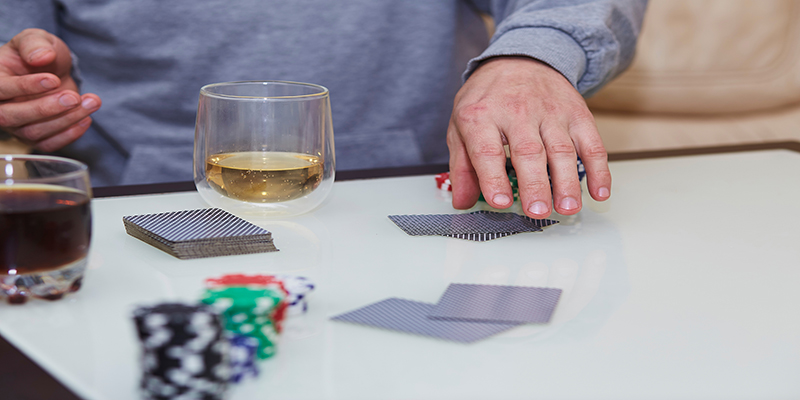
When gamblers obtain a six, they end up with a total of seventeen, which is not a desirable situation. If a player gets a seven, their total increases to eighteen, which is not terrible, but keep in mind that the average winning hand is 18.5. The best potential outcome in this position is for players to draw an eight, nine, ten, or any of the face cards. This provides them a fantastic hand of at least nineteen, giving them a very good chance of winning this hand.
Always Split a Pair of 8S and Aces
Having a pair of 8S or aces will reduce your chances of winning blackjack. That's why experts always encourage players to split them up if possible. Below, we'll take a closer look at why you should not:
Splitting a Pair of 8S
Most blackjack specialists and material from prominent blackjack guides recommend splitting pairs of 8-8 rather than forfeiting them, despite the fact that this is still a hard total of 16. This is also known as the rule of thumb. Some gambling experts advise sacrificing the pair of 8s versus high dealer upcards as 10, K, Q, and J.
Unfortunately, this is a big error, and here's why. When you have 8-8 versus a ten-value card, the dealer clearly has an advantage over you. On average, he or she would arrive at standing totals of 17 through 21 on 77% of the time.
To make matters worse, the dealer's likelihood of busting while starting with a ten-value card is just about 23%. Dividing an 8-8 will cost you money regardless of how you handle it, but splitting is preferred because it cuts your losses the greatest. With 8-8, you have an excellent chance to flip a dreadful stiff 16 into two totally new hands, each beginning with an 8. This increases your chances of creating a winning hand and defeating the dealer.
Assuming you play conventional six-deck S17 blackjack, where you can resplit up to four hands and double down after splitting, your 8-8 will lose against the dealer's ten-value card 77 times out of 100 and win 23 times out of 100. When you divide your 8-8, your win percentage increases to 38 hands out of every hundred rounds.
For example, for the purpose of simplicity, assume you are flat betting £1 per hand. If you only hit the pair, you will lose £77 and earn £23 on average per hundred hands. In the long run, this results in a net loss of £54 on average. Meanwhile, if you constantly split your 8-8 against the dealer's ten-value card, you would lose £62 and profit £38, respectively.
In this example, your net losses are reduced to 2 x £24 = £48 every hundred hands. This may not appear to be a substantial improvement, but you are still losing £6 less than if you drew or stayed on your pair of 8-8. Meanwhile, if you opt to surrender this pair, as some gambling experts recommend, you will lose £50 on average every hundred rounds (you lose only half your original wager when surrendering).
As a result, continually surrendering your pair of 8s versus the dealer's 10 costs £2 more in the long run than splitting. When you're down 8-8, it's very clear you're in a losing situation no matter how you choose to play it.
The final line is that splitting will save you more money in the long run than surrendering or other alternative options. When dealt a long-term loss like stiff 16, the only consolation for blackjack players is knowing they have made the mathematically optimum move.
Splitting a pair of Aces
Unlike splitting 8s, which is a defensive strategy, splitting paired aces is an offensive strategy since it allows the player to turn one poor total into two powerful hands with a good chance of defeating the dealer. Regardless of the dealer upcard, splitting your aces offers you positive expected value and lets you make use of your superior position.
Some players dislike splitting aces because it demands them to place an additional stake to cover the second hand. And, yes, when you divide this pair, you will not always defeat the dealer. It happens occasionally that you capture another ace or a tiny card, leaving you with a low hand total.
Nonetheless, this is the most mathematically optimum move you can make since it yields the biggest long-term earnings. When holding aces, no other playing choice is as potent as the split. One oddity of splitting this specific pair is that casinos often forbid striking or re-splitting them.
In addition, if players receive another pair of aces after splitting the first pair, it is advised that they consider them as the first pair and re-split. Players must remember to use their strategy every time they have a certain card combination, in this example two aces. It is worth noting that if gamblers do this and then re-split, they must treble their initial stake, whereas the first time they split, they simply had to double it.
Never Split a Pair of 5S or Tens
In contrast to the above two cases, splitting a pair of 5S or tens can reduce your chances of winning. More specifically, we will consider the following two cases:
Splitting a Pair of 5S
When the dealer is in a bad spot and reveals low-value upcards like 4, 5, or 6, some players are fast to split paired 5s. Although it is obvious that this is a terrible move, others say that it is done to maximize earnings from the dealer's adverse position.
Moreover, the bust rates for blackjack dealers are greater with these cards, as follows: 39.58 percent with a 4, 41.84 percent with a 5, and 42.28 percent with a 6. (accurate for six-deck games under the S17 rule).
However, before you split, consider the possibility of shattering a really strong total of 10 and ending up with two horrible stiffs like hard 15 or hard 14. Another consideration is that the deck has already been emptied of some of the cards (5s and 6s) that can be used to successfully double on one or both split 5s. When you divide your 5s, the chances are even more stacked against you.
By splitting, the player foregoes a great chance to double on a respectable total. According to blackjack experts, splitting 5-5 in multiple-deck S17 games leads to a negative expectation against dealer upcards 4 and 5.
The projected value of this play against the 6 is positive, but it is lower than the expected value of hitting and doubling down. The numbers show why doubling is the better move with 5s vs low dealer upcards. No matter what card your dealer shows, you should never split this pair.
Splitting a Pair of Tens
While the optimal move for the other pairings was rather contentious and sparked several debates, when it comes to having a pair of tens, all expert players agree. The rationale behind this is simple, given that the average winning hand is 18.5, a pair of 10s gives players a good total of 20.
Improving such a hand is nearly difficult because the probabilities of losing it are 92 percent if players choose to hit. This strategy should be avoided if players’ odds of going bankrupt are greater than the dealer's.

The ace is the only card that will not result in this scenario. This strong card provides players with the necessary flexibility by allowing them to count it as one and avoid exceeding twenty-one. However, the chances of them getting lucky and drawing this card are quite low, and it is just not prudent to hit with a pair of tens.
When faced with a pair of the same rank, players should always resist the first option that springs to mind — splitting. The reason for this is that splitting will simply divide one winning hand into two lost ones. The possibilities of a different outcome are extremely slim, and it is just not worth the risk.
Conclusion
To comprehend how Blackjack works and get an advantage over the casino, players must learn how to proceed in every position. There are several tactics from which they may select the one that works best for them.
Many gamblers begin with one of the fundamental strategy variants and, despite observing that it does not suit them well, they continue to employ it because they are terrified of change. Players should decide how they want to play their game at the table and stay with it.



